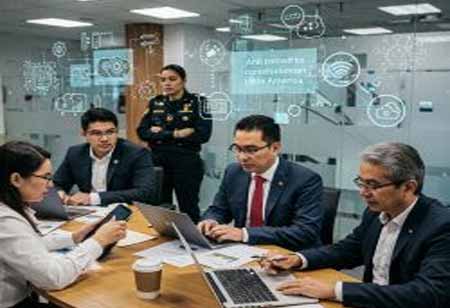THANK YOU FOR SUBSCRIBING
Be first to read the latest tech news, Industry Leader's Insights, and CIO interviews of medium and large enterprises exclusively from Gov CIO Outlook
THANK YOU FOR SUBSCRIBING

By
Government CIO Outlook | Tuesday, April 16, 2024
Stay ahead of the industry with exclusive feature stories on the top companies, expert insights and the latest news delivered straight to your inbox. Subscribe today.
Younger job seekers' motivations often extend beyond salary, with job security, meaningful work, an inclusive workplace culture, and personal satisfaction from community service being the most motivating factors.
Fremont, CA: In 2024, public service employers can become employers of choice by adopting key strategies and actions. The pace of change in artificial intelligence will continue to impact state and local governments. Still, public sector managers can also make a difference in other areas to ensure their workforce remains competitive.
Engaging New Generations of Talent
The public sector is undergoing a generational shift, necessitating efforts to attract younger candidates through familiarization, promotion, and engagement. Early civic education, job shadowing, internships, and short-term service projects can help. Schools of higher education can boost interest in public service careers. Young job seekers' motivations often extend beyond salary, with job security, meaningful work, an inclusive workplace culture, and personal satisfaction from community service being the most motivating factors.
Expanded Retirement Plan Auto-Features
Defined Benefit (DB) retirement plans are common in the public sector, with employers offering supplemental or hybrid options. However, participation in DC plans is low due to other benefits decisions and younger staff's perception of retirement as distant. The Secure 2.0 law will increase auto-enrollment and auto-escalation provisions in the private sector. Governments without auto features may find it increases retirement savings and creates a financially secure workforce.
Supporting Employees’ Financial Security
Public sector employees are concerned about personal finances, with 2/3 worrying about it at work. Inflation concerns 64%, and 59% are considering leaving their jobs. Employers should enhance salaries and benefits, provide financial literacy education, and offer retirement, health benefits, paid time off, and non-traditional benefits to improve employees' economic well-being.
Understanding and Addressing Student Loan Debt
The Institute is studying student debt among state and local governments. The survey revealed that 80% of public employees find debt problematic, 77% find it an obstacle to retirement savings, and 25% of those under 35 are worried about paying back loans. The study will also examine debt loads for specific degrees and their impact on hiring for hard-to-fill positions, helping employers make informed decisions.
Modernizing Workforce Systems and Classifications
The Workforce Survey reveals that 93% of HR managers have had to re-open recruitments due to insufficient qualified applicants, with only 9% offering a mobile app for candidates. To address this, employers are implementing initiatives like compensation studies, reducing minimum education, skills, and licensing requirements, dropping degree requirements, and hiring below minimum qualifications for post-hiring upskilling. Balancing these factors is crucial.
I agree We use cookies on this website to enhance your user experience. By clicking any link on this page you are giving your consent for us to set cookies. More info

However, if you would like to share the information in this article, you may use the link below:
www.govciooutlookapac.com/news/the-changing-face-of-workforce-in-2024-nid-2142.html



